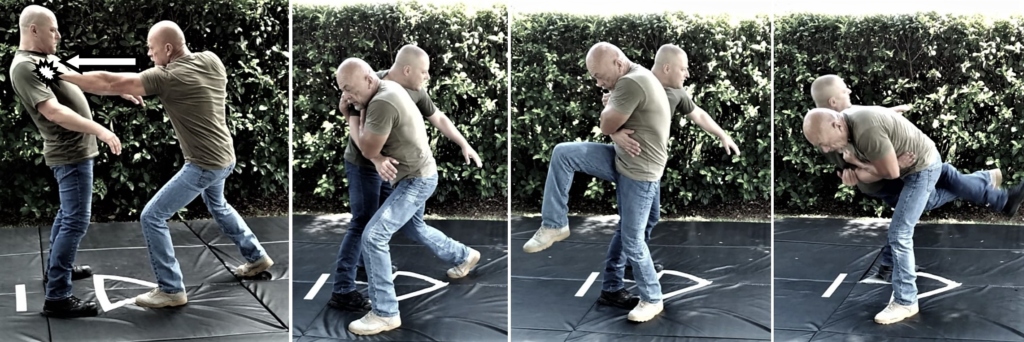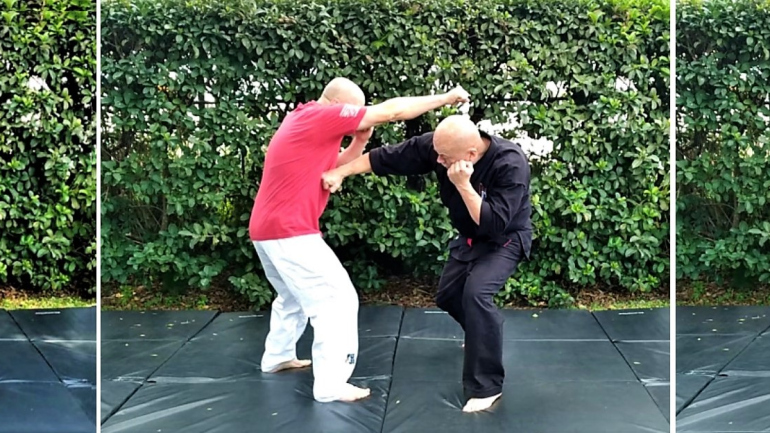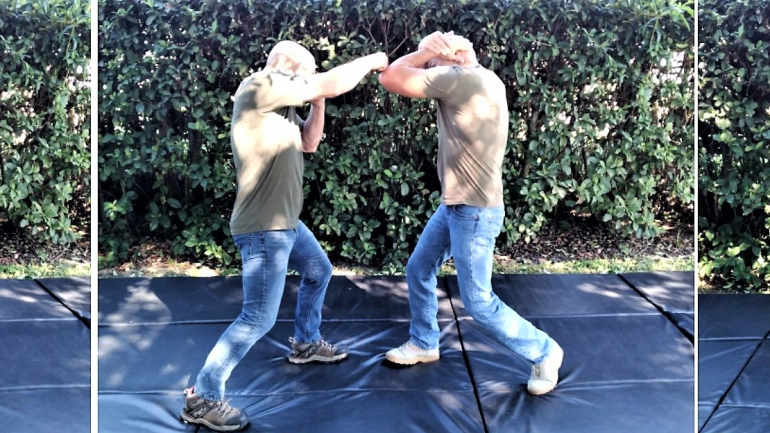OSOTO GARI (Cross Hock takedown) – Single post variation (Leading with left foot)
This variation of osoto gari, found in several old US Army Combatives manuals,is very ballistic and entirely gross motor in execution making it extremely effective in a self defense situation. You are hitting your opponent’s shoulder with only one hand as the set up the throw. The strike to the shoulder is executed much like delivering a lead hand straight punch (jab) in boxing. This variation can also be executed leading in with either foot.

(1.) From either a fighting stance or non-violent posture, push off the right foot stepping to your opponent’s right foot with your left foot. Simultaneously, STRIKE your opponent’s right shoulder with the heel of your left hand and grab the clothing at the area struck. (The blow to your opponent’s shoulders should be delivered hard enough to knock the opponent off balance.)
(2.) Push off the right foot again stepping forward with your left foot to the outside of the opponent’s right foot. Your weight shifts to the left foot and leg, maintaining the hold on his shoulder, pull his right shoulder into your right shoulder with the left hand. Your right hand under hooks and grabs his right arm at the triceps. Pull his arm hard into your chest. (The pulling actions break his balance to his right leg.) Bring your right knee forward and up in between your left leg and the outside of your opponent’s right leg. Your right thigh should be raised until it is parallel with the ground.
(3.) Swing your right leg downward and back without letting your right foot touch the ground and sweep your opponent’s leg upward. The back of your calf should make contact with the back of his calf as you sweep his leg high. As you sweep your opponent’s leg drive his shoulders downward to the ground.
(To do the takedown to the opposite side substitute the word “left” for “right” and “right” for “left”.)
Common mistakes with the cross hock takedown and it’s variations
1. Not keeping your axis forward.
2. Not stepping deep enough to the outside with left foot. Left foot should step to the outside of opponent’s foot. The toes of your left foot should be next to the opponent’s right foot even with just past his toes.
3. Not getting your opponent off balance and his axis backwards first before attempting the throw.



